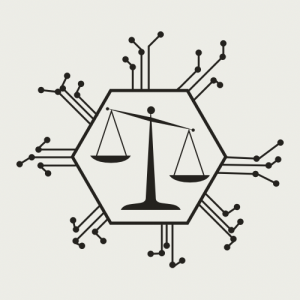The Danish Parliament (Folketing) in Copenhagen – the backdrop for a bold bid to reclaim digital sovereignty.
Denmark is making an unprecedented move: it’s pulling the plug on Microsoft services in its public sector as part of a quest for digital sovereignty. In a world where Microsoft’s software has been the de facto standard for decades, the Danish government’s decision to phase out Windows and Office 365 in favor of home-grown or open-source alternatives has tech watchers and legal analysts buzzing. This isn’t just a routine IT upgrade – it’s a politically charged shift driven by concerns over data privacy, national security, and compliance with European data regulations like the GDPR. In this engaging deep dive, we’ll explore the motivations behind Denmark’s breakup with Microsoft, the concrete steps it’s taking to replace Big Tech with sovereign tech, and how this reflects a broader European trend (think France, Germany, and the EU’s GAIA-X initiative) to curb dependencies on foreign technology. Along the way, we’ll look at the technical trade-offs of going open-source, and the implications for sovereignty, law, and international relations in tech policy.
Buckle up – Denmark’s digital sovereignty revolution is as much about law and geopolitics as it is about Linux and LibreOffice.
Legal and Political Motivations: The Case for Digital Independence
Denmark’s pivot away from Microsoft didn’t arise from mere budget nickel-and-diming or tech trendiness – it’s rooted in serious legal and political concerns. At the heart of the decision is a desire to assert control over data and infrastructure in an era of cloud computing and transborder data flows. Danish officials increasingly view reliance on U.S. tech giants as a potential liability for both privacy and national security. Here are the key motivations driving the move:
- Data Privacy and GDPR Compliance: European data protection laws – notably the General Data Protection Regulation (GDPR) – impose strict rules on how personal data is handled, especially when it might leave the EU. There’s growing worry that using U.S.-based services like Microsoft 365 could conflict with these rules if EU citizens’ data ends up accessible to U.S. authorities. In fact, France’s education ministry warned in 2022 against using free versions of Microsoft 365 or Google Workspace in schools due to concerns they might violate GDPR; officials cited the risk that the U.S. Cloud Act could compel American companies to hand over data stored abroad. This “data sovereignty” issue – ensuring Europeans’ data stays subject to EU law and not foreign laws – has become a top priority. The 2020 Schrems II ruling by the EU Court of Justice (which struck down an EU–U.S. data transfer pact) amplified these concerns, making governments like Denmark even warier of entrusting sensitive data to U.S. tech firms without additional safeguards.
- National Security and Geopolitical Tensions: Reliance on foreign tech is seen as a national security risk. Even friendly nations can have diverging interests – a fact Denmark learned pointedly during the Trump administration. Recall the bizarre episode when the U.S. President mused about buying Greenland; around the same time, reports emerged of the U.S. ramping up espionage on Greenland and Denmark. These events “led to debate in Denmark about data protection and reliance on the US for its digital infrastructure”. The fear is that in a political dispute, a foreign provider could cut off critical services or leak data. This fear isn’t hypothetical: when the U.S. sanctioned the International Criminal Court in 2020, Microsoft temporarily restricted the ICC Prosecutor’s email access – a chilling illustration that using an American service can turn into a vulnerability if Washington’s foreign policy demands it. Danish officials want to ensure that Denmark’s data and communications can’t be held hostage or surveilled by an external power at a whim. As Denmark’s Digitisation Minister Caroline Stage bluntly put it, the goal is to “safeguard Denmark’s digital infrastructure from the uncertainties of geopolitical tensions and the risk of disrupted access to US-based services”.
- EU Regulatory Control and Digital Sovereignty: Denmark’s move aligns with a broader European push for what the EU calls digital sovereignty. In simple terms, digital sovereignty means Europe controlling its own digital destiny – its data, networks, and technology – rather than depending on a few foreign corporations. The European Union has been increasingly vocal that tech dependence can undermine member states’ regulatory control and economic resilience dig.watch . If all your critical software is foreign, how do you enforce your laws on it? By reducing reliance on Microsoft, Denmark aims to regain autonomy in deciding how software is designed, updated, and used in accordance with Danish and EU rules. This dovetails with EU-wide concerns about everything from cybersecurity to antitrust – a recognition that technology dominance by Big Tech can erode the sovereignty of nations. “EU member states have increasingly prioritised digital sovereignty in response to a range of concerns, including security, economic resilience, regulatory control, and the geopolitical implications of dependency on non-European tech providers,” notes the Geneva-based Digital Watch Observatory.
- Vendor Lock-in and Monopoly Concerns: On a more practical note, there’s the classic gripe of any IT department – vendor lock-in. Microsoft’s near-monopoly in office productivity has long raised eyebrows. Danish authorities worry that being “completely dependent on American tech companies” is “not a sustainable situation”. The dominance of Microsoft means higher bargaining power for the company and potentially higher costs or fewer choices for customers. Henrik Appel Espersen, who chairs Copenhagen’s municipal audit committee, cited Microsoft’s “strong grip on the market” as a driver for change. By diversifying their software stack, Denmark hopes to introduce competition (or at least the credible threat of it) into a space that has been dominated by a single vendor. In the long run, embracing open-source alternatives could break the cycle of expensive licensing fees and forced upgrades. (Indeed, a side benefit of this sovereignty push is saving money – Germany’s Schleswig-Holstein state projects millions of euros in savings by eliminating Microsoft license costs in coming years).
- Political Signal and Public Trust: Lastly, it’s as much a political statement as a technical one. Denmark is signaling to its citizens (and to Big Tech itself) that it’s taking control of their data destiny. There’s a growing public sentiment in Europe that critical services – like government email, documents, and data storage – shouldn’t be subject to the policies of a private company headquartered abroad. By pursuing an autonomous tech stack, Danish leaders aim to boost public trust that government data (and by extension, citizens’ data) is handled in Denmark’s interest first and foremost. It’s no coincidence this move comes packaged in the language of sovereignty and independence – terms usually reserved for national self-determination. In a witty sense, Denmark is telling Microsoft: “It’s not about you, it’s about us and our independence.”
Out with Microsoft, In with Open-Source: Denmark’s Plan in Action

So what exactly is Denmark doing to wean itself off Microsoft? The shift is being spearheaded by the Ministry of Digitalisation (essentially Denmark’s tech modernization agency), and it involves a phased replacement of Microsoft products with open-source or local alternatives. Minister Caroline Stage has outlined a rollout that starts with her own ministry and could pave the way for other agencies. Here’s how it’s unfolding:
- Microsoft Office → LibreOffice: The first target is Microsoft’s omnipresent Office suite (Word, Excel, PowerPoint, Outlook, etc.). Over half of the staff at the Digitalisation Ministry have been slated to switch from Microsoft Office to LibreOffice as early as this summer, with the remainder migrating by the end of the year. LibreOffice, for those unfamiliar, is a free open-source office suite developed by the Document Foundation in Germany. It includes analogues for all major Office apps – Writer (Word), Calc (Excel), Impress (PowerPoint), etc. The choice of LibreOffice is deliberate: it keeps data in open formats (ODF – Open Document Format) and ensures Denmark isn’t tied to proprietary Microsoft file standards. By the fall, if all goes well, “all employees will be on an open-source solution” at the ministry. This dramatic shift earned headlines in Denmark, with Stage emphasizing that it’s about regaining control and avoiding hefty license fees (not to mention dodging the looming end-of-support for Windows 10)
- Microsoft Windows → Linux: Ditching Microsoft also means saying goodbye to Windows on government PCs. Denmark plans to replace the Windows operating system with a Linux distribution on its public-sector computers. Linux, the open-source OS kernel, comes in many flavors (Ubuntu, Debian, Fedora, etc.), though Danish officials haven’t publicly pinned down which distro they’ll use. The appeal of Linux is its robustness, security, and the fact that it can be controlled and customized as needed – no Redmond backdoor or forced updates. It’s a bold step, considering Windows has been the workhorse of office computing for decades. But it’s not unprecedented – countries like Germany have trialed Linux in government before (more on Munich’s famous attempt later). Denmark’s wager is that modern Linux, with the right support, can provide a stable replacement for Windows, free from the Microsoft ecosystem. By November 2025, the Ministry of Digitalisation aims to be fully off Windows and Office 365, running Linux and LibreOffice across the board
- Microsoft Outlook/Exchange → Open-Xchange + Thunderbird: Email and calendars are the lifeblood of government work, and Microsoft’s Outlook (paired with Exchange server or Microsoft 365 cloud) is a tough habit to break. Denmark is evaluating alternatives here too. A leading candidate is Open-Xchange for email servers, coupled with Mozilla’s Thunderbird email client. Open-Xchange (often abbreviated OX) is a German-based open-source email and groupware platform that can replace Exchange. It can handle email, calendars, contacts – all the collaboration bits Outlook/Exchange does – but on servers that Denmark can host domestically or in an EU cloud. Thunderbird, meanwhile, is a free open-source email application that could serve as the desktop client for staff (it’s already popular among Linux users). Germany’s Schleswig-Holstein state has gone this route: it’s migrating ~30,000 public employees (including police and judges) to LibreOffice, Thunderbird, and Open-Xchange for their office productivity and communication. Denmark is likely to follow a similar model for its communication needs, ensuring that emails and schedules are managed on European-run software.
- Microsoft Teams → Alternative Collaboration Tools: Microsoft Teams, which integrates chat, video conferencing, and file sharing, became a staple in many offices (especially during the pandemic). But Danish authorities have signaled they’re even ready to drop Teams. (As Dirk Schrödder, digitalization minister of Schleswig-Holstein, memorably declared: “We’re done with Teams!”). In place of Teams, Denmark can combine various tools: Nextcloud – an open-source file sharing and collaboration platform – is one piece of the puzzle, already adopted in Schleswig-Holstein for cloud storage and document sharing. Nextcloud has add-ons like Talk for video meetings and chat, which could stand in for Teams’ functionality. For video conferencing specifically, other European-hosted options exist (for example, Jitsi is a popular open-source video meeting software, and there are commercial EU-based services as well). While Denmark hasn’t publicly detailed its Teams replacement, the approach will likely involve a combination of open solutions that collectively offer chat, video, and collaborative document editing – all hosted under Danish/EU control. The overarching aim is to “take back control” of how the state’s data is stored and managed, eliminating the reliance on Microsoft’s cloud.
The transition is being carried out methodically. Danish officials are well aware that this is a high-stakes IT migration with little room for error. Acknowledging the risks, Minister Stage has noted that if the transition proves too disruptive, they could temporarily revert back to Microsoft products to ensure continuity. In other words, they’re not burning the ships; they have a lifeboat if needed. This pragmatic stance – “willingness to prioritize operational continuity over strict adherence to the transition timeline”– indicates that Denmark wants to avoid the mistakes of past all-at-once migrations. The rollout will be gradual, starting with tech-savvy departments, ironing out kinks, then expanding.
It’s also worth noting that Denmark’s national initiative follows on the heels of its local governments. Copenhagen and Aarhus, the country’s two largest cities, had already announced plans to phase out Microsoft as their main IT supplier in municipal administration. They cited many of the same reasons – costs, monopoly concerns, and geopolitics (including those tensions during Donald Trump’s presidency) – for pursuing independent solutions. This local experience provides a testing ground and some momentum for the national government. Jan Damsgaard, a digitalization professor in Copenhagen, lauded the ministry for “try[ing] out these open source systems” and breaking Denmark’s unsustainable overreliance on U.S. tech. However, he also cautioned that switching to user-driven open source is “not without challenges” and requires “extensive and deep IT skills” in-house. We’ll discuss those challenges shortly, but first, let’s look at exactly what tools Denmark and its neighbors are adopting as they bid farewell to Microsoft.
A Continental Trend: Europe’s Push to Curb Big Tech Dependence
Denmark might be making headlines, but it’s far from alone in this digital sovereignty drive. Across Europe, governments have been reassessing their reliance on Big Tech, with several taking concrete actions to diversify away from American (and sometimes Chinese) tech providers. Let’s put Denmark’s move in context with a quick tour of what other European countries are doing:
- Germany: Germany has emerged as a front-runner in the sovereignty push. The northern state of Schleswig-Holstein announced it will eliminate Microsoft software from its government offices, including Teams, Word, Excel, Outlook, and even Windows itself. About 30,000 public sector users (administrators, police, judges) are switching to the same lineup Denmark favors: Linux for OS, LibreOffice for docs, Thunderbird/Open-Xchange for email, Nextcloud for file sharing. The state’s digital minister Dirk Schrödder’s battle cry – “We’re done with Teams!” – underscored a desire to “take back control” of data storage and management from U.S. providers. Germany also has a history in this arena: the city of Munich famously migrated to Linux and OpenOffice in the 2000s (the “LiMux” project) to become less Microsoft-dependent. That project, though initially successful, hit snags due to compatibility issues and user resistance, and Munich reverted to Microsoft in the late 2010s. The lesson learned (painfully) was that technological change must be managed carefully – hence newer efforts like Schleswig-Holstein’s are phased more gradually and with political buy-in at high levels. Notably, Germany’s federal IT bodies have also explored open-source; even the German armed forces and some ministries have toyed with LibreOffice and Linux for specialized uses. Germany sees digital sovereignty as part of its strategic autonomy, often linking it with national security – for instance, concerns that foreign espionage or geopolitical conflicts could compromise cloud services have spurred calls for Europe’s own cloud infrastructure.
- France: The French government has been vocal about digital sovereignty for years. In public education, France took a stand in late 2022 by advising schools not to use U.S. cloud email and office suites unless they comply with GDPR. Specifically, the Education Ministry warned against the free versions of Microsoft 365 and Google Workspace in schools, citing doubts about their compliance with EU data laws and pointing to the U.S. Cloud Act risk. Instead, schools were urged to use on-premises or EU-based solutions that keep student data in Europe. France has invested in domestic tech as well – for example, the French government launched a homegrown messaging app (Tchap) for officials to replace WhatsApp/Telegram, and it has supported local cloud providers. Perhaps most notably, France (along with Germany) spearheaded GAIA-X, the European cloud initiative (more on that in a moment). France’s approach is sometimes a mix of open-source and what one might call “sovereign partnerships”: recently, French companies like Orange and Capgemini partnered with Microsoft to offer “Bleu”, a sovereign cloud in France licensed to run Microsoft’s tech under French control. This indicates France’s pragmatism – recognizing Microsoft’s products are deeply integrated in many organizations, one solution is to host them on French soil with a French entity controlling access, to circumvent the Cloud Act issue. Still, France’s preference, whenever feasible, is to encourage open technologies and European platforms to reduce outright dependence on foreign tech.
- Italy: Italy joined the fray early on in a specific context – the military. Back in 2015, Italy’s Ministry of Defense announced it would install LibreOffice (and use the Open Document Format) on over 100,000 PCs as part of a long-term plan for autonomy over its documents and data. This massive deployment in the defense sector was framed in terms of standardization and independence: by using ODF and open-source software, Italy ensured it wasn’t locked to Microsoft’s proprietary formats and licensing. The move also saved costs (always a welcome bonus in budget-strapped ministries). More recently, Italy has discussed broader digital sovereignty in the context of cloud services, and it’s participating in European efforts like GAIA-X to nurture local cloud providers. Some Italian regions and cities have also embraced open-source in schools and administration, though perhaps with less fanfare than Denmark or Germany.
- Spain and Others: Spain has had regional initiatives – for instance, the autonomous community of Valencia migrated tens of thousands of government PCs to LibreOffice as early as 2012, primarily to cut costs and avoid vendor lock-in. Other Spanish regions followed suit in varying degrees. Likewise, Belgium, the Netherlands, Austria, and Sweden have all had government discussions about reducing reliance on foreign tech, spurred on by the Schrems II decision and GDPR enforcement. In the Netherlands, experts like Bert Hubert have raised alarms about dependency on U.S. clouds, noting that even with data residency guarantees, the legal dependencies remain. Europe’s smaller states (e.g., Finland or Portugal) often wait to see how the bigger players fare, but they too are interested in the outcomes. In short, there’s a palpable European zeitgeist in favor of re-balancing the tech playing field – a recognition that control over technology is part of sovereignty in the 21st century.
- European Union (GAIA-X and beyond): At the EU level, the drive for digital sovereignty has coalesced in initiatives like GAIA-X. Launched in 2020 by EU ministers, GAIA-X aims to build a federated, interoperable European cloud infrastructure that adheres to European standards of data protection, transparency, and fairness. Think of GAIA-X as Europe’s blueprint for a cloud ecosystem where data can be shared seamlessly but securely, and where no single company (especially not a foreign one) holds all the keys. It’s not a single cloud provider, but rather a framework linking many providers (big and small) under common rules – a bit like a cloud club that European businesses and governments can trust. The goal is to foster home-grown innovations and ensure that sectors like health, finance, and public services can run on clouds that are governed by EU laws and values (privacy, openness, competition). GAIA-X has gained political support and now in 2025 is entering an implementation phase, with hundreds of “data spaces” or pilot projects across Europe. While some critics have labeled it ambitious or even quixotic, it underscores how seriously Europe is taking the challenge of U.S. cloud dominance. In parallel, the EU has also passed regulations like the Digital Markets Act (DMA) and proposed an EU Cybersecurity Certification (which includes cloud services) – all tools to rein in Big Tech’s power and give European alternatives a fighting chance.
In sum, Denmark’s Microsoft breakup is part of a broader European story: from Paris to Berlin to Brussels, governments are asserting that sovereignty isn’t just about tanks and treaties, but also about servers and software. Europe’s message to Big Tech is essentially, “we’ll use you on our own terms – or not at all.” And while Denmark might be at the vanguard, many are watching closely to see if this grand experiment can succeed and maybe be replicated elsewhere.

Tech Trade-offs: Pros and Cons of Ditching Microsoft for Open Alternatives
Whenever a government or company contemplates switching from a well-entrenched platform (like Microsoft’s) to open-source alternatives, a slew of technical and practical trade-offs come into play. Denmark’s plan is no exception. It promises many benefits – but also comes with challenges. Let’s unpack the main trade-offs in play:
- Cost Savings vs. New Investments: One of the easiest selling points of going open-source is saving on licensing costs. Microsoft enterprise licenses for Windows, Office 365, server CALs, etc., run up hefty bills each year. Cutting these out can save millions – as noted, Schleswig-Holstein expects to save several million euros in the next few years by eliminating Microsoft fees. Denmark, too, stands to redirect money from licenses to other needs (or back to taxpayers). However, open-source isn’t entirely “free” – you have to invest in support, training, and possibly hiring or contracting developers. Danish officials acknowledge that to truly benefit from LibreOffice and Linux, you need skilled IT staff who can tailor and maintain the systems. There may be costs for migrating data (converting thousands of Word and Excel files to open formats), and for integration work (making LibreOffice talk to legacy systems, etc.). In the long run, though, these investments build domestic capability rather than paying rent to a foreign vendor. The return on investment is not just cost savings, but also the intangible value of self-reliance.
- Security and Control vs. Responsibility: By moving to open-source and local solutions, Denmark gains full control over updates, security patches, and data location. No more silent telemetry sending data to Redmond, no forced cloud account integration – the government can harden systems to its liking and decide when to roll out changes. Security can be improved by customizing code and inspecting it (open-source means code transparency). However, this also means Denmark assumes responsibility for keeping systems secure. With Microsoft, if a zero-day vulnerability appears, Microsoft’s army of engineers typically works up a patch that you just apply. In the Linux/Open-source world, patches come from the community or vendors, but the onus is on the Danish IT teams to stay on top of them and ensure compatibility. The Danish government will likely subscribe to support services (for example, many governments use Red Hat or SUSE support for Linux to get timely fixes). Overall, many argue open-source is more secure for sovereignty because you’re not at the mercy of a vendor’s priorities or potential government pressure. For example, one worry with using U.S. software was if the U.S. government ever ordered a company to withhold updates or insert backdoors – a scenario far less plausible when you maintain your own open-source fork. As Nextcloud’s CEO put it, the U.S. CLOUD Act means authorities can access data hosted by U.S. companies “whether data is located in the US, Europe, or anywhere else”, and if things ever soured politically, the U.S. could even order cut-offs of services or updates. By controlling the software, Denmark immunizes itself from that kind of remote kill-switch.
- Usability and Productivity: Let’s face it, Microsoft has set a high bar for user experience in productivity software. One big concern is whether civil servants will be as productive in LibreOffice and Thunderbird as they were in Microsoft Office and Outlook. Past attempts like Munich’s saw employees complaining about compatibility and missing features, which hurt productivity and morale. LibreOffice today is quite advanced, but subtle differences (UI quirks, or how it handles very large documents or complex spreadsheets) can irk users who have known nothing but Office for years. There’s also the issue of document compatibility: while LibreOffice can open and save in Microsoft’s formats (DOCX, XLSX), complex documents with macros, custom formatting, or SharePoint integrations might not translate perfectly. Denmark will need to identify critical spreadsheets or templates and possibly adjust them for LibreOffice or retrain users to achieve the same ends differently. The government has indicated it’s mindful of this – the migration is gradual and they are ready to rollback if users hit severe roadblocks. Also, by focusing first on the Ministry of Digitalisation, presumably a tech-savvy group, they can work out usability kinks before expanding to less techy departments. Over time, as staff adapt (new hires might come already familiar with Google Docs or LibreOffice from university, for example), the usability gap should close. Open-source software has made strides in user-friendliness, but change management will be key – a bit of humor and patience goes a long way (“Where’s my Clippy?” will hopefully not be a common cry).
- Compatibility and External Collaboration: Government agencies don’t work in a vacuum – they send documents to businesses, other countries, and citizens, many of whom still use Microsoft Office. A trade-off in dropping Microsoft is ensuring you can still exchange files seamlessly. Denmark will likely adopt open formats like PDF and ODF as standards for external sharing. In many cases, this is fine (PDF is universally readable). But if a Danish ministry needs to collaboratively edit a Word doc with, say, the European Commission or a contractor, they’ll need to manage format conversions or use intermediary tools. The Open Document Format (ODF) is an ISO standard, and the EU itself encourages its use, so Denmark might actually push external partners to accept ODF files. We might see an interesting effect where Denmark’s stance nudges others to use open formats – an externality that increases interoperability in the long run. Still, in the short term, there could be headaches (lost formatting in a round-trip conversion, etc.). The good news is that many European governments have already been dealing with this by using mixed environments – e.g., the European Parliament uses an open-source suite for some editing and Microsoft for others, and they manage. It just requires clear policies on formats (e.g., “citizens submitting .docx will get a PDF back, not an edited .docx”).
- Innovation and Flexibility vs. Established Ecosystem: Microsoft’s platforms benefit from a vast ecosystem of third-party tools, templates, and integrations. By moving away, Denmark might lose some of these conveniences. For instance, many off-the-shelf software products integrate with Microsoft Active Directory, Outlook, or Office macros. Replacing those might require custom development or finding alternative products. On the flip side, going open-source can spur local innovation. Denmark can customize software to fit its needs (with in-house devs or by funding open-source developers) – try asking Microsoft to add a niche feature just for Denmark, and see how far you get. Open systems also mean if a better product comes along, you can switch more easily since open standards prevent lock-in. There’s also a patriotic angle: instead of paying Microsoft, Denmark can invest in Danish or European tech firms to support their solutions, boosting the local tech sector. In the long run, this could lead to a thriving ecosystem of European software companies competing on quality and innovation, rather than everyone defaulting to one-size-fits-all products from the U.S. Essentially, Denmark is trading the convenience of Microsoft’s integrated ecosystem for the freedom to mix-and-match and foster innovation at home. It’s a trade-off of short-term convenience versus long-term technological sovereignty and agility.
- Skill Requirements and Culture Shift: As mentioned, moving to open-source requires not just IT staff retraining, but a bit of a culture shift among users. People will need to learn new shortcuts, possibly new workflows (e.g. using Nextcloud instead of emailing files around). Caroline Stage’s ministry is reportedly keen on building up internal expertise – possibly hiring more open-source specialists or training existing staff. “If you don’t have a member of staff who can develop the system, you can’t implement it,” warned Prof. Damsgaard, emphasizing that to really leverage open-source, one should actively participate in its community. This means Denmark might start contributing code or plugins to LibreOffice, for instance, which is a different mindset from just being a customer of a vendor. The upside is building cutting-edge expertise domestically; the downside is if those skills are hard to acquire quickly, there could be a talent gap. However, Europe has a robust open-source community, so Denmark can also collaborate with other governments. There’s already talk of knowledge-sharing – e.g., Germany and Denmark exchanging notes on LibreOffice deployments, maybe even pooling resources to improve features like Microsoft file compatibility. In an optimistic scenario, this could lead to a virtuous cycle: more government users of open-source => more resources poured into those projects => better software for all.
To sum up, the trade-offs are real but manageable. Denmark is not leaping blindly; it is learning from past attempts (hello Munich) and from contemporaries (hello Schleswig-Holstein). The key is a gradual, well-supported transition with political commitment. The Danish government’s willingness to course-correct (even temporarily backtrack if needed) shows a pragmatic approach. They’re treating this like a marathon, not a sprint. If successful, the payoff isn’t just cost savings, but a resilient, locally controlled IT infrastructure – the digital equivalent of energy independence.
Implications: Sovereignty, Law, and International Tech Policy
Denmark’s campaign to reclaim digital sovereignty has implications that stretch far beyond its borders. It sits at the intersection of technology, law, and international relations – highlighting how deeply intertwined those domains have become. Here are a few big-picture reflections on what this all means:
- Redefining Sovereignty for the Digital Age: Traditionally, sovereignty meant control over your territory and governance without outside interference. In the 21st century, data and software are part of that territory – invisible, but very real. Denmark’s move is a concrete step toward asserting that digital borders matter. Control over data centers, software source code, and encryption keys is now akin to control over ports and highways. We may well see more countries follow suit, treating core digital systems as critical infrastructure that should be nationally or regionally owned. This doesn’t imply isolation – Denmark isn’t building a Great Firewall or banning foreign tech outright – but it’s carving out a sphere of autonomy. It’s similar to how countries approach defense equipment (preferring local or allied suppliers) or energy resources. Estonia’s President famously said “data embassies” (servers abroad under Estonian control) are as sacred as physical embassies. In that vein, Denmark running open-source software isn’t just an IT choice; it’s a statement of sovereign rights in cyberspace.
- Legal Ripple Effects: As more governments demand sovereign-compatible tech, we might see legal and contractual changes. For instance, government procurement contracts could start requiring that software vendors guarantee EU-only data processing or escrow their source code in case of supply cut-off. We’re already seeing hints of this: the EU’s approach to cloud (like the upcoming EU Cloud Certification Scheme) might classify cloud services based on immunity to foreign jurisdiction. OVHcloud, a European provider, noted that Microsoft’s EU Data Boundary is nice, but “data residency does not protect against extraterritorial access” by foreign authorities. Expect more legal scrutiny of contracts with big providers – maybe even clauses that void contracts if a provider is forced to violate GDPR or if it gets acquired by an untrusted entity. Europe could also double-down on frameworks like the EU–US Data Privacy Framework (the new Privacy Shield) to try to bridge legal gaps, but Denmark’s path suggests a preference to avoid the issue entirely by localizing data and software. On the flip side, U.S. companies might lobby for clearer international agreements to assuage European clients. The legal world will have to evolve to this new reality where tech choices are a form of legal posture.
- Pressure on Big Tech: Moves like Denmark’s, if replicated, put pressure on Big Tech to adapt. Microsoft, to its credit, isn’t standing still. It has announced an EU Data Boundary for its cloud and even a “Microsoft Cloud for Sovereignty” offering to let governments control data residency and encryption keys. These steps indicate Microsoft wants to retain European government business by bending to sovereignty demands. If enough large customers threaten to leave, companies may go further – perhaps structural changes like setting up legally independent European subsidiaries or offering on-premises versions that were previously cloud-only. We might even see pricing changes; if open-source erodes part of Microsoft’s monopoly, it may respond by making its products or terms more attractive. In a sense, Europe flexing its muscles could spur Big Tech to become more privacy-friendly and sovereignty-friendly globally, which would be a win for users everywhere. However, there’s also the chance of a tech rift: U.S. providers doubling down on their home market and Asia, while Europe cultivates its own stack – a kind of digital alignment reminiscent of the Cold War blocs (but hopefully far less hostile!).
- International Diplomacy and Trade: Tech has become a point of diplomatic discussion. The U.S. government likely isn’t thrilled when allies reduce use of American products – it’s not just an economic issue but also an intelligence one (U.S. law can’t easily reach data if it’s not on U.S.-linked services). There may be subtle diplomatic pressure or negotiation. For example, as part of broader EU-U.S. trade talks, the U.S. might seek assurances that “protectionism” isn’t creeping in under the guise of sovereignty. Europe will counter that trust and legal alignment are prerequisites for using foreign services. In an optimistic scenario, both sides work towards stronger privacy agreements and maybe even limits on laws like the Cloud Act for allies. (The U.S. has CLOUD Act executive agreements with a few countries to streamline cross-border data requests – perhaps extending something like that to EU nations could alleviate concerns.) Conversely, Europe’s assertiveness might embolden other regions – say, Latin America or Africa – to also demand more control over tech and not cede it all to Silicon Valley or Shenzhen. We could see a more multipolar tech world, which might complicate global trade but also prevent any single country from having too much unchecked tech power.
- Innovation and Open Tech Ecosystem: On a positive note, Europe’s sovereignty push could spur a wave of innovation in open-source and European tech. If governments invest in improving LibreOffice, for instance, that benefits everyone who uses it, from businesses to non-profits worldwide. The open-source community often welcomes government participation, as it can fund features that aren’t commercially lucrative but are socially valuable (like better accessibility, or support for minority languages, etc.). We might look back and say Denmark’s move helped catapult the maturity of open-source office suites to truly rival Microsoft in every aspect. Similarly, more users on Linux and Nextcloud could drive new features, better security, and a richer ecosystem of plugins and support services. European tech companies—ranging from cloud providers to enterprise software firms—could find a solid home market as governments switch over, giving them the base to then compete globally. Sovereignty doesn’t mean isolation; ideally, it means Europe contributes more to the global tech toolbox rather than just consuming imports. In that sense, digital sovereignty for Europe can increase global diversity in tech solutions, which is healthy – monocultures are brittle, while diverse ecosystems resist single points of failure.
- Potential Pitfalls: It’s only fair to acknowledge that this grand plan could face setbacks. If Denmark’s experiment were to flop spectacularly (say, major outages or user revolt leading to a retreat back to Microsoft), it could scare off other governments from trying the same. That’s why all eyes are on this rollout. So far, with many employees already using LibreOffice in Copenhagen’s city government, the sky hasn’t fallen. But change is hard, and there will likely be skeptics ready to highlight any hiccup (“Minister’s presentation crashed on LibreOffice – back to PowerPoint!” could be a tabloid headline if unlucky). The Danish initiative’s success will depend on managing expectations and delivering quick wins (like immediate cost savings and robust privacy assurances) while mitigating the inevitable rough edges. The political will is crucial – it appears Denmark’s government, across parties and at local levels, has consensus that this is worth pursuing (probably because it appeals to both fiscal conservatives and privacy-minded liberals, a rare alignment!). As long as that will holds, temporary challenges won’t derail the project. In the longer term, if Europe truly reduces its dependence on U.S. tech, it will mark a significant shift in the global tech order – essentially a re-balancing where no one region has outsized control.

Final Thoughts
Denmark’s decision to bid adieu to Microsoft in pursuit of digital sovereignty is a bold gambit – one part technocratic project, one part political theater, and one part legal intrigue. It captures a moment in time where governments are awakening to the strategic importance of technology choices. For legal and tech enthusiasts, it’s a fascinating case study of how abstract principles like sovereignty and data privacy translate into the nuts and bolts of IT systems and software licenses.
Is this the start of a broader “digital independence movement”? Quite possibly. Today it’s Denmark and a handful of others; tomorrow it could be a standard expectation that governments use open, sovereign tech by default. Citizens might even demand it – much like they demand transparency or security, they could add digital autonomy to the checklist of good governance. There’s an almost cheeky element in imagining civil servants in Copenhagen swapping Outlook for Thunderbird or saying “hej hej” to Clippy’s cousins. But there’s also a very serious underpinning: trust. By taking control of its software, Denmark is asking its citizens to trust that their government’s digital operations answer to Danish law and democratic oversight, not to a EULA from California. In an era of ever-larger cyber threats and ever-more pervasive tech, that trust is worth its weight in gold. Will Denmark’s breakup with Microsoft go down as a landmark success or a cautionary tale? The world will be watching. In the meantime, one can’t help but root a little for the underdog – after all, David (or in this case, Denmark) taking on Goliath is the kind of story that appeals to our sense of fair play and self-determination. And if this story ends with a more balanced tech ecosystem and stronger privacy protections for individuals, it could be a happily-ever-after that extends far beyond Denmark’s borders. Denmark’s digital sovereignty revolution illustrates that technology is never just about technology – it’s about power, law, and values. By striving to align its tech with its legal principles and political needs, Denmark is charting a course that many others in Europe are likely to follow. In the grand scheme, that could reshape the transatlantic tech relationship and ensure that in the future, decisions about European data are made in Europe. As we watch this space, one thing is clear: the age of unquestioned Big Tech dominance in government IT is waning, and the era of digital sovereignty has dawned. Denmark just happened to be one of the first to raise its flag.
Stay curious, stay informed, and let´s keep exploring the fascinating world of AI together.
This post was written with the help of different AI tools.




